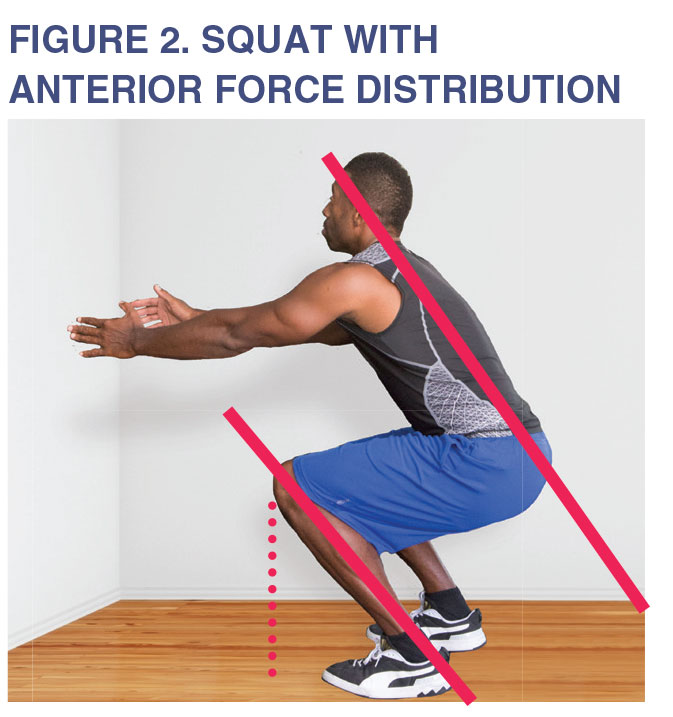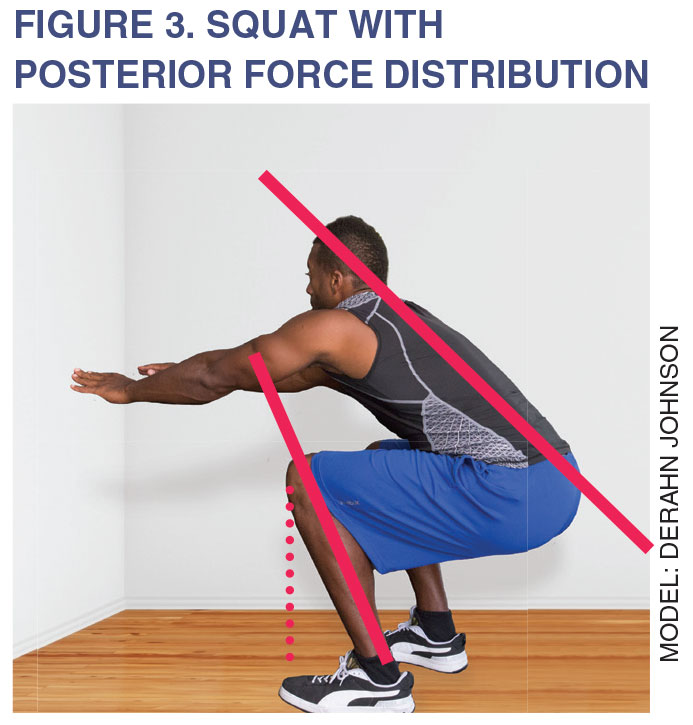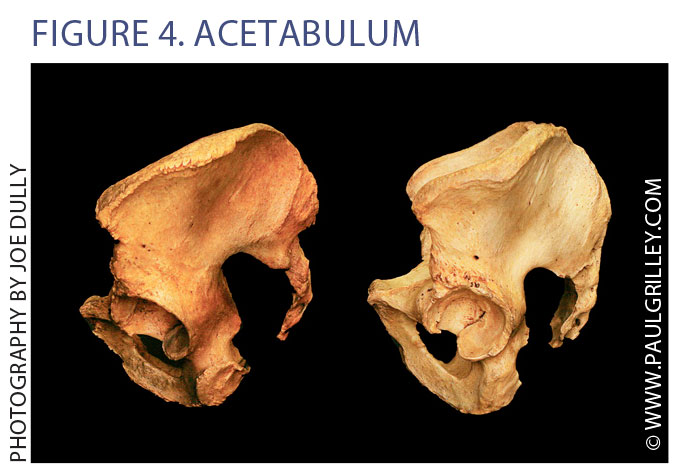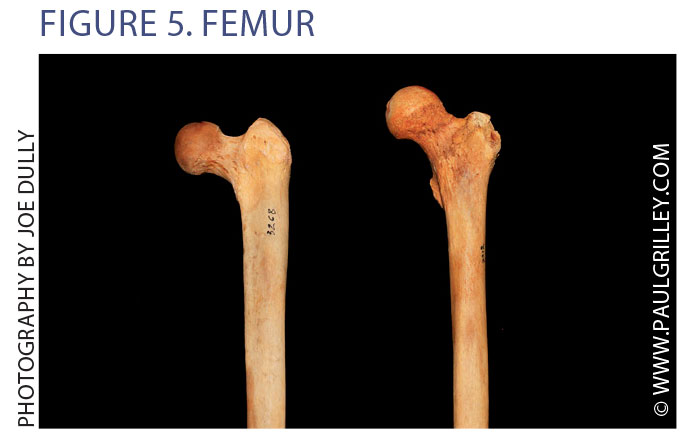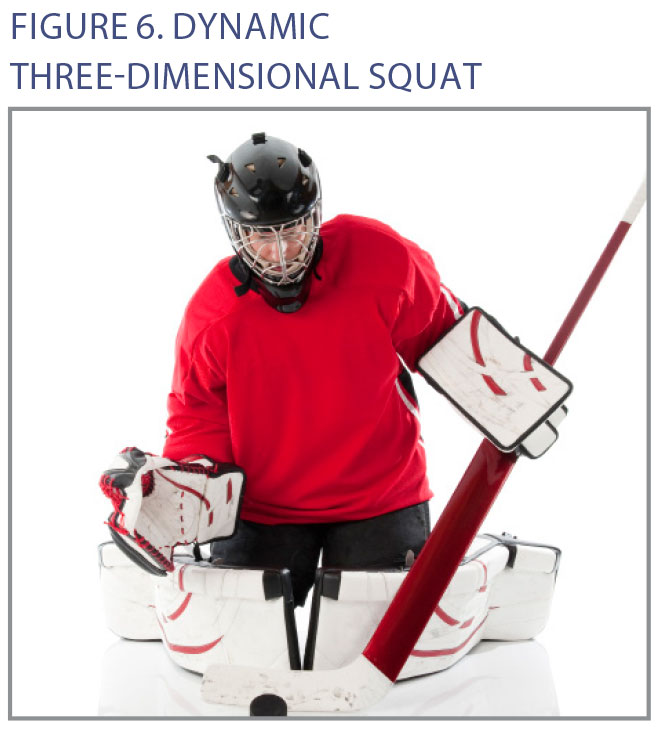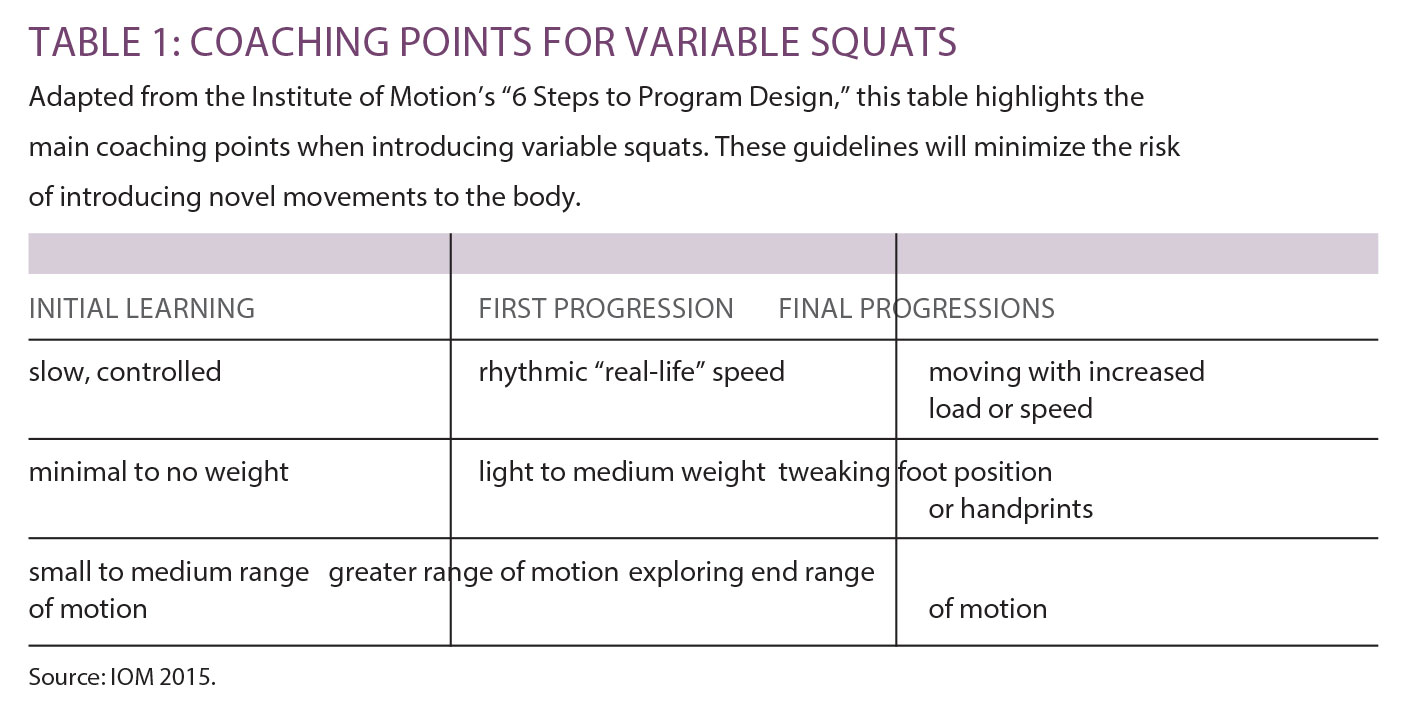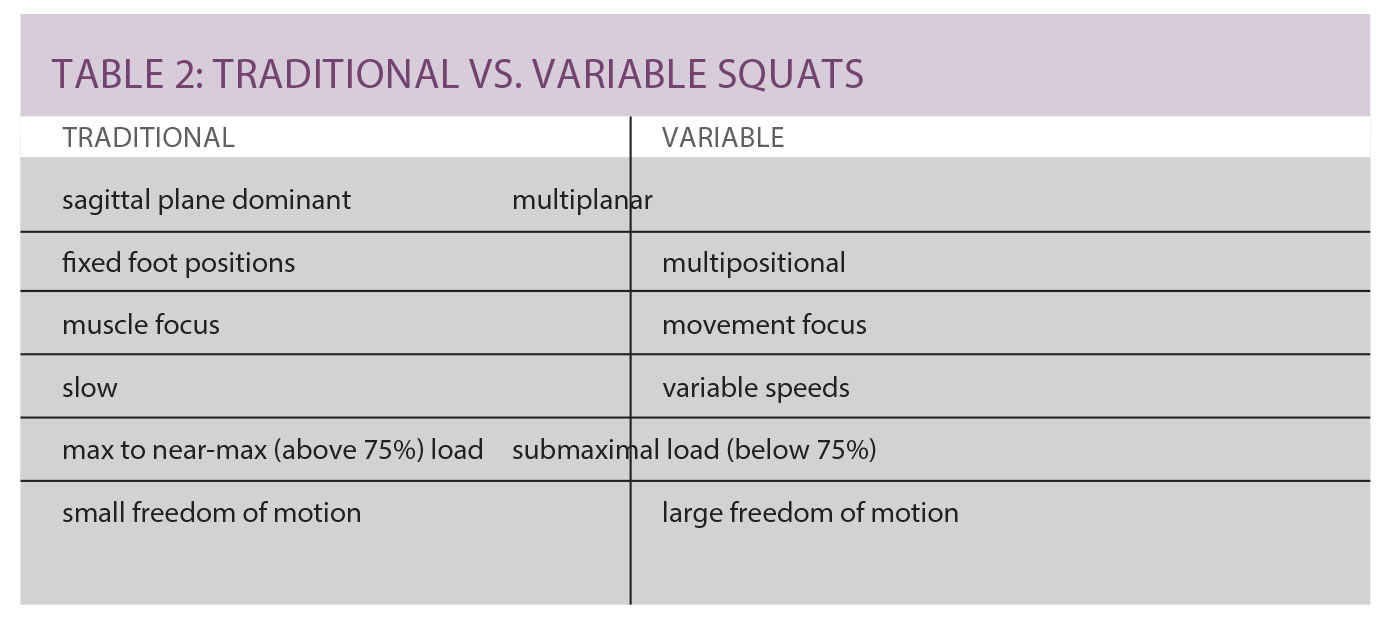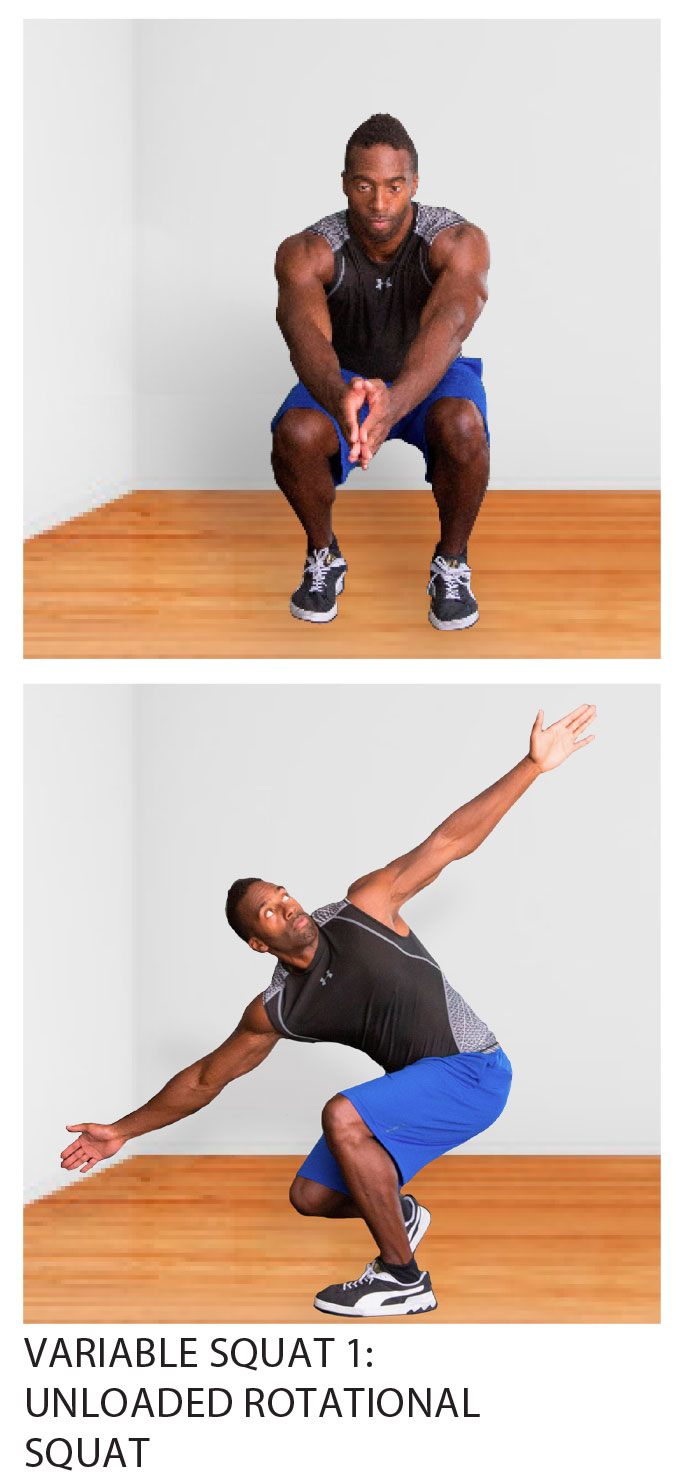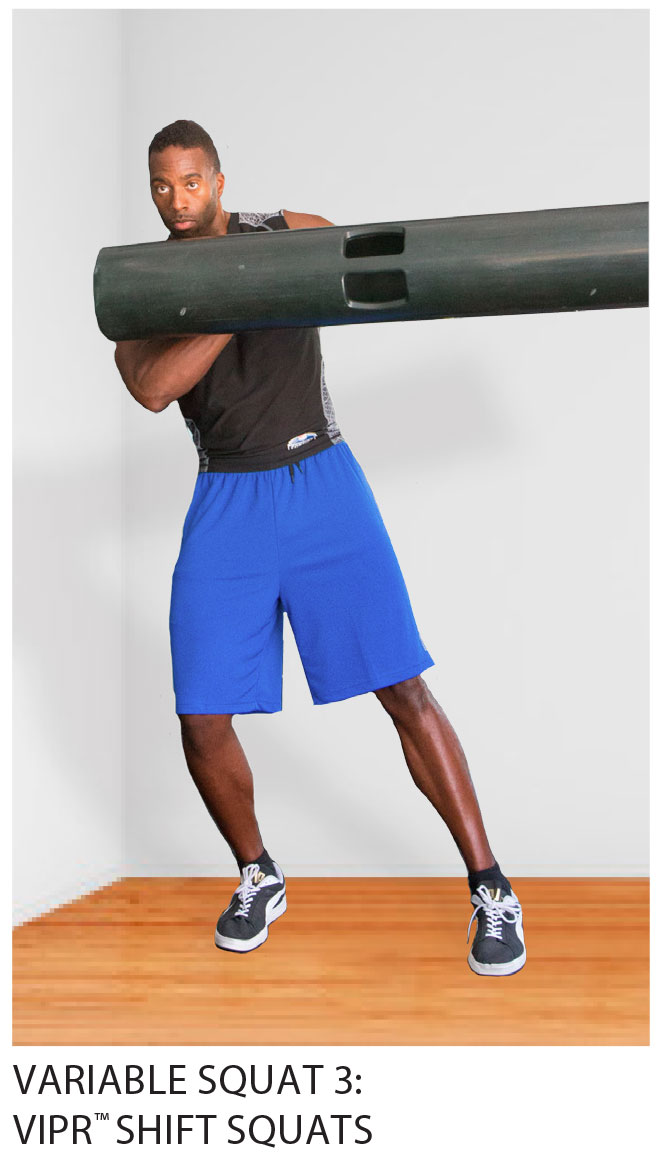Is There a Right or Wrong Way to Squat?
Could the traditional advice for this exercise mainstay be leading your clients astray? Research provides answers.
“Hey, keep your knees behind your toes when you squat!”
“Deep squats are bad for the knees!”
“My doctor told me I should not squat anymore.”
“You should never let the knees cave in or out during a squat.”
Chances are you’ve heard this advice and maybe even given it to your clients. I know
that for many years in my career I’ve been guilty of making similar
recommendations to clients from all walks of life. The problem is, where
did this advice come from? Is it valid and who is it valid for? What
principles should we follow when doing or teaching one of the most popular
exercises on the planet?
This article will share much of the latest research about the science and application of squats and will help separate fact from myth. I’ll then explore squat training fundamentals and
provide strategies for personalizing squats so they match clients’
abilities and goals.
Keep the Knees Behind the Toes?
Though “Keep the knees behind the toes”
is a popular cuing strategy when coaching squats, the source of this
cue—along with the purpose it serves—is up for debate. Picture a group
session with one instructor and 30 students: If squats cause knee pain
for four or five people, it’s reasonable for the instructor to shout
this cue to help clients in pain distribute force away from the knees
without disrupting the flow of the entire class.
But does this cue actually promote a healthy squat, or does it simply isolate force to a
different region of the body? Let’s look at three kinds of squats, shown
in Figures 1–3:
In an even squat, ankles, knees and hips flex at the same time during the descent. For most people, the torso and lower leg will be parallel.
In an anterior-loaded squat, the ankles and knees usually flex faster and further than the hips.
In a posterior squat, the hips bend faster and/or further than the knees.
One of the body’s primary strategies for a dynamic movement like a
squat is to mitigate stress by distributing it more evenly through the
system and to use as little energy as necessary to get the job done.
During a squat, the body uses synergistic muscle relationships and joint
synchronization to produce, stabilize and transfer force through the
system.
McKean & Burkett (2012a) have studied the squat extensively
and found that “restricting the movement of the knee during a squat will
alter the movement sequence and hence place undue strain on segmental
joints during the squat.” If we consciously discourage the knee from
flexing as we try to lower the hips, we simply displace more tension
through the posterior structures and disrupt normal joint
synchronization. As a result, more energy is expended, and there is more
force through the lower-back area, potentially creating a complication
elsewhere in the body.
Three main factors dictate whether the knees will
cross the toes during a squat, allowing professionals to personalize
coaching strategies:
-
Tibia-femur-torso length ratio.People
with a long femur and/or torso will squat with the knees crossing the
toes to maintain equal force distribution during the squat (McKean &
Burkett 2012b). Otherwise, those with long femurs and/or torsos might do
knee-dominant or hip-dominant squats. - Mobility of the ankles and
hips. Clients will need adequate flexibility of the ankle complex
and the hip if the squat’s goal is to maximize force distribution. Lack
of flexibility also impairs joint synchronization and timing, leading to
excessive wear through the soft tissues of the knee and low back (Kritz,
Cronin & Hume 2009). This is one of the reasons why many power-lifting
shoes have an elevated heel to allow more ankle motion and help maintain
an upright torso. - Loaded vs. unloaded squat, and load placement. The
amount of load added during a squat and where that load is carried and
driven can influence the squat’s dynamics. For example, performing a
squat with weight held anterior to the chest increases the dominance of
the hip extensors (Lynn & Noffal 2012).
Must Knees Stay in Line With the Toes?
If the knees were pure hinge
joints (like the hinges on a door), we would expect them to consistently
line up with the toes during a squat. Although the structure of the knee
certainly favors a unidirectional orientation, it’s important to
recognize that this joint does in fact move in all three planes of
motion—especially in concert with the hip and the ankle (Gray 2003).
These factors determine whether the knees should line up with the second
and third metatarsals:
- Q-angle of the hip
- amount of load
- length relationship of the tibia and femur
- ankle and hip mobility
- intent when executing the exercise
Looking at Figures 4 and 5, you may notice that the orientation of the
acetabulum in the pelvis or the angle in which the femur approximates
the acetabulum can differ from person to person. This can dramatically
influence whether your client has a bias to squat with a slight knee
valgus (knees caving inward) or a slight knee varus (knees pushing
outward). Depending on the height of the squat, this may cause the femur
to track in or out—or sometimes to do both. McKean and Burkett (2012a)
conclude that knee action is required: “[It] should not be discouraged
if the knees move both in and out slightly during the descent, and
[this] is not necessarily related to muscular weakness but may be linked
with the overall movement strategy.” This also plays to the notion that
the ideal foot position for heavy squats depends on the individual, and
we should avoid forcing people to squat with one type of foot stance.
The angle at which the acetabulum sits in the pelvis can bias which plane of motion the hips move through during a squat.
The length and angle of the femoral neck (among other structural traits of the femur) can also create bias in motion.
Three-dimensional squats challenge the body’s ability to squat through a
variety of directions, ranges of motion and starting positions. A common
sporting example is the hockey goalie. In Figure 6, notice how the
goalie’s knees cave in and internally rotate to block a shot between the
legs. If the knees are purposefully driven in and out during a squat,
the lower-extremity tissues must have enough strength to tolerate the
direction and amount of force running through them.
A dynamic squat is
not destined to create knee pain or excessive wear and tear so long as
proper training and diet ensure the quality of the tissue matrix to
withstand such forces. This adaptive process is called mechanotransduction,
which fortifies stronger tissue and bone to withstand higher levels
of force in the direction and point of application of force on the body.
The key take-home is that neither knee valgus nor knee varus is
inherently bad when it is desired and the body has the tensional
framework to dissipate force.
Conditioning the soft tissues to handle unique directional forces and joint positions is paramount for an athlete like this hockey goalie.
Are Deep Squats Bad for the Knees?
It is understandable to assume that
the deeper the knee flexes, the more pressure this puts on the
soft-tissue structures surrounding the knee. However, is this true? And
is more “pressure” or force a bad thing?
Interestingly enough, force
applied to the anterior cruciate ligament and the posterior cruciate
ligament during a squat actually diminishes in the deeper portions of
the squat. In a study analyzing load on the knee at various squat
heights, Hartmann, Wirth & Klusemann (2013) say that concerns over the
apparent higher risk for chondromalacia, osteoarthritis and
osteochondritis in deep squats are unfounded. In fact, shallower squats
actually expose the knee to greater compressive forces.
If you’re
looking to explore a deep squat, recognize these three basic squatting
principles:
-
Load and joint freedom of motion have an inverse
relationship. This means as load increases, freedom of motion
through the joints decreases and vice versa. In other words, the heavier
the load, the stricter we want to be about enforcing ideal form. -
Rhythm and timing (joint synchronization) are things to look for. Ideally,
the ankles, knees and hips will all flex and extend congruently.
Limitations in ankle and hip mobility can alter joint synchronization
and inhibit a deep squat. Therefore, a great place to start conditioning
a deep range is to elevate the heels or hold onto a TRX® Suspension
Trainer™ to counterbalance the hips. Combine this with mobility
strategies and clients will be on their way. - Pain is a signal to
modify the squat. If squatting causes pain, modify the exercise by
altering the footprint, range of motion, speed or direction in which the
pelvis is being driven. If pain persists, then refer to a specialist.
Variable Squats
Webster’s Dictionary defines variability from a
biological perspective as “the power possessed by living organisms, both
animal and vegetable, of adapting themselves to modifications or changes
in their environment, thus possibly giving rise to ultimate variation of
structure or function.” From a mechanical standpoint, reduced
variability is known to cause repetitive stress injuries, while an
optimal movement system has the capacity to perform a given task in a
variety of ways (Harbourne & Stergiou 2009). This enhances our entire
being, from our heart and nervous system to our connective tissues and
bones. And for bodybuilders, there may be benefits to including variable
movement strategies for increased strength and hypertrophy (Fonseca et
al. 2014).
A standard personal training certification covers most of the
training principles for traditional, sagittal-plane, heavy-loaded
squats. What’s missing in certification texts are the benefits and rules
of incorporating variable squats. (See Table 1 for coaching tips on
variable squats and Table 2 for a comparison of traditional vs. variable
squats.)
Variable squats offer a host of potential benefits when
performed in the right environment:
- Exploring new
positions through different planes of motion enhances the nervous
system’s motor control. Simply put, learning how to squat in a variety
of ways encourages the nervous system to find the optimal way to
disperse forces through the system in multiple directions and positions. - Bone density may increase to tolerate variable directional force
(see mechanotransduction). - Variable forces enhance the
connective tissue matrix, improving shape stability, tissue resiliency
and joint integrity (Myers 2011). - Withstanding different
lines of force requires greater intra- and inter-muscular coordination,
potentially enhancing strength gains and hypertrophy (Fonseca et al.
2014).
Squat to low-to-medium range of motion with hands together out in front of chest. While holding this range of motion, drive left hand to left and behind body, allowing thoracic spine, hips and ankles to rotate to disperse force through body. If ankle or hip mobility is limited, be sure to pivot trail leg.
Client assumes staggered 1.5 stance with hands together out in front of chest. Trainer pushes gently on client’s hands, making sure client doesn’t lose stability but uses enough tension to warrant strength adaptation. Client then maintains constant tension against trainer while decelerating into squat and standing back up. Client relaxes arms before beginning next rep.
Standing with feet shoulder-width apart, shift weight over right foot while shifting ViPR laterally to left. Squat to controllable range before holding bottom of squat. Now shift entire body over left foot while simultaneously shifting ViPR to right. Reverse sequence back to start position and then repeat on other side.
“Tradition is the illusion
of permanence.”
—Woody Allen
As we scrutinize our current practices, it’s important not
to “throw the baby out with the bath water.” During a squat, coaching
cues such as “Keep the knees in line with the toes” or “Deep squats are
bad for the knees” may still be proper for some in certain situations,
but generalization of these coaching strategies has led to poor practice
and widespread confusion about ideal human motion. Moving forward, we
should continue to master the squat pattern with personalized
recommendations based on each client’s unique anatomical structure,
biomechanics and personal preferences.
References
Fonseca, R.M., et al. 2014. Changes in exercises are more effective than in loading schemes to improve muscle strength. Journal of Strength & Conditioning Research, 28 (11), 3085-92.
Gray, G. 2003. Functional Video Digest Series. Harbourne, R.T., & Stergiou, N. 2009. Movement variability and the use of nonlinear tools: Principles to guide physical therapist practice. Physical Therapy, 89 (3), 267-82.
Hartmann, H., Wirth, K., & Klusemann, M. 2013. Analysis of the load on the knee joint and vertebral column with changes in squatting depth and weight load. Sports Medicine, 43 (10), 993-1008.
IOM (Institute of Motion). 2015. IoM Pro App.
Kritz, M., Cronin, J, & Hume, P. 2009. The bodyweight squat: A movement screen for the squat pattern.Strength and Conditioning Journal, 31 (1), 76-85.
Lynn, S.K., & Noffal, G.J. 2012. Lower extremity biomechanics during a regular and counterbalanced squat. Journal of Strength & Conditioning Research, 26 (9), 2417-25.
McKean, M.R., & Burkett, B.J. 2012a. Knee behaviour in squatting. Journal of Australian Strength and Conditioning, 20 (2), 23-36.
McKean, M.R., & Burkett, B.J. 2012b. Does segment length influence the hip, knee and ankle coordination during the squat movement? Journal of Fitness Research, 1 (1), 23-30.
Myers, T. 2011. Fascial fitness: Training in the neuromyofascial web. IDEA Fitness Journal, 4 (4), 36-43.
Derrick Price, MS
Derrick Price MS, CPT, PES, CES has been active on many levels in the fitness industry for over 8 years. He holds a MS in Exercise Science and Health Promotion with an emphasis on injury prevention and performance enhancement from the California University of Pennsylvania where he has also spent time as an Adjunct Faculty member teaching courses in Exercise Program Design. Aside from personal training at the acclaimed Function First in San Diego, CA, Derrick also is a Master Trainer for ViPR, Technogym, Core-Tex and Power Plate. He began his educational career as a Master Instructor for the National Academy of Sports Medicine and has since moved on to become a Faculty Member for the Personal Training Academy (PTA) Global. Derrick currently resides in San Diego with his wife Laura where they enjoy many outdoor activities such as hiking, golf, disc golf and a variety of other sports

